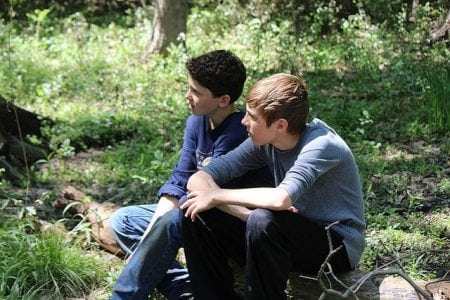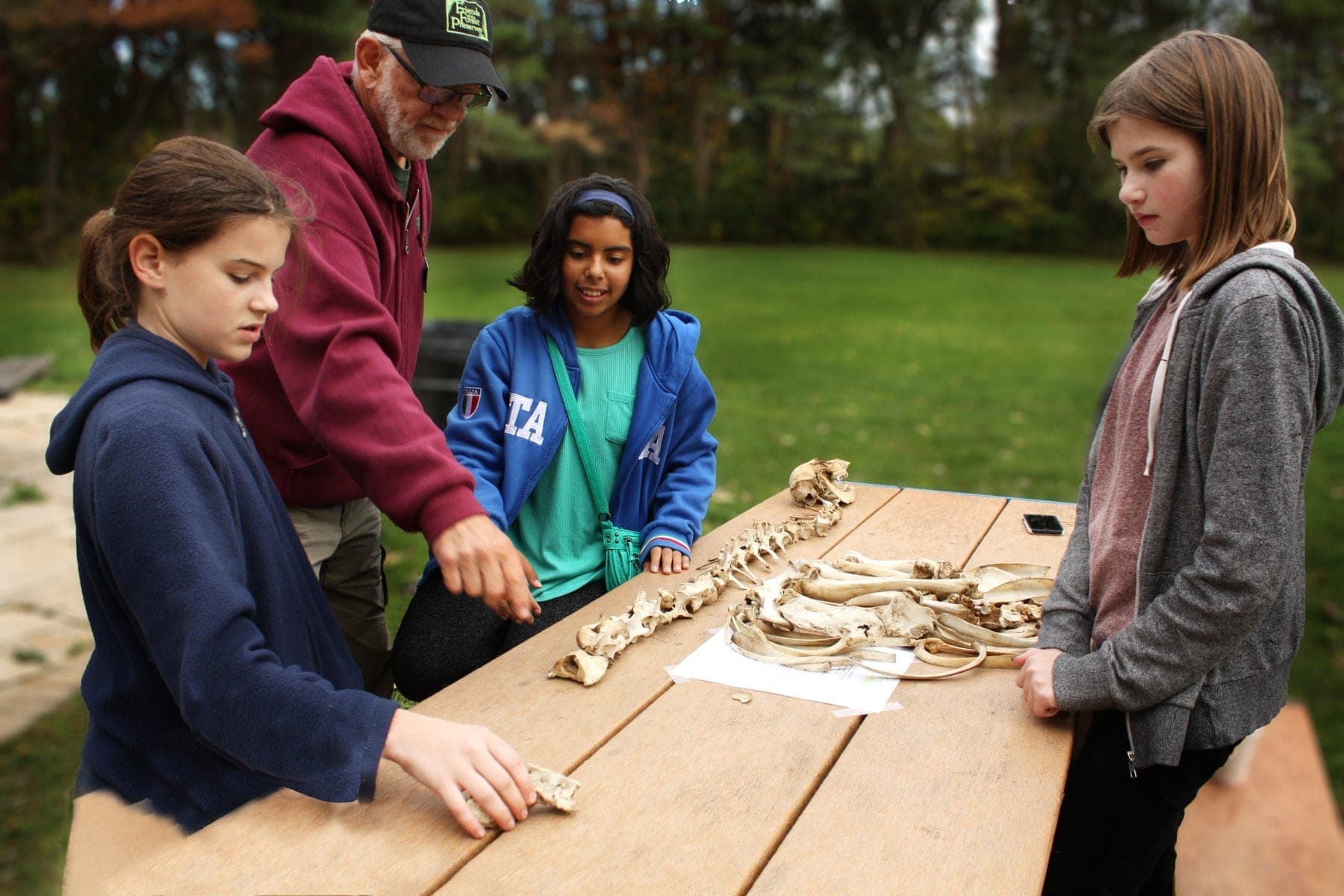FIRST GRADE: LIFE SCIENCE
Organization: After-school Outdoor Adventures class sponsored in conjunction with the Winnetka Park District.
Goal: Teach concepts of Structure and Function (1-LS1-1) in mammals.
Program: Small groups of students participated in a woodland hike looking for evidence of wildlife tracks, scat, nesting sites, and food remains. Afterwards, they examined various mammal skulls and teeth. Discussion focused on classification into herbivores, carnivores, and omnivores.
Results: Approximately 200 children, age five to ten, have participated in the Outdoors Adventures Programs over the last three years. Many have returned multiple times to experience a variety of activities correlated to different seasons of the year.

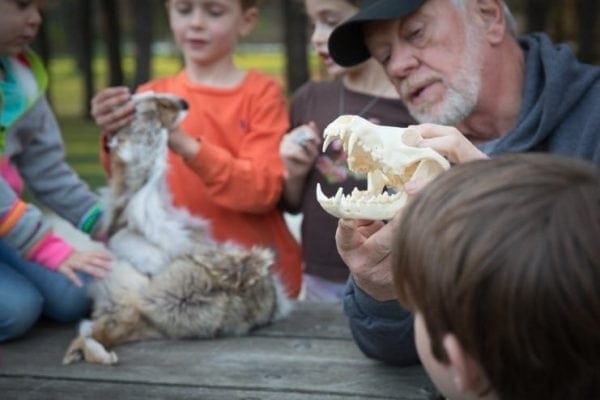
THIRD GRADE: SOCIAL SCIENCE
School: Third grade students from four different Winnetka elementary schools who came together for Pioneer Day at Crow Island Woods.
Goal: Teach Change, Continuity and Context concepts found in Native American and Early American Settlers Communities in the Chicagoland area during the mid-1800s.
Program: Third grade classes from multiple Winnetka schools met at Crow Island Woods to explore the Red Oak Savanna, a model of typical early 1800 habitat. They looked for resources settlers of the Skokie Marsh could have used for their daily survival.
Results: BackYard Nature Center joined forces with the Winnetka Park District, the Winnetka Library, and docents from Schmidt-Burnham Log House, managed by the Winnetka Historical Society in order to provide over 300 students the opportunity to apply their classroom studies to real life during Pioneer Days. Students were led through activities designed to mimic the life of settler’s during the 1800’s: maple tree tapping to produce syrup, and a hike to search for items that might be used by early pioneers.
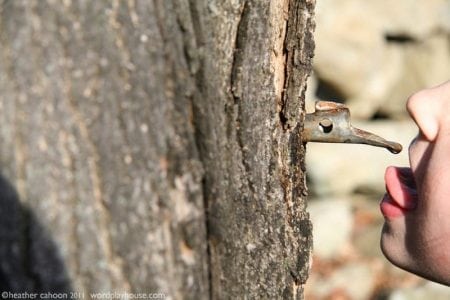
FOURTH GRADE: ENGLISH LANGUAGE ARTS
School: St. Phillip Elementary School.
Goal: Using nature as inspiration, write narratives to develop real or imagined experiences or events using effective technique, descriptive details, and clear event sequences (W.4.3).
Program: Students were taken on a hike around West Ridge Nature Preserve in order to locate and identify some local plants and animals. They were given the opportunity to use binoculars, field guides, animal call devices, and fishing rods and reels.
Result: Thirty students returned to their classrooms after the hike where their teachers asked them to write and draw about their experiences in nature. Student work was then displayed at the preserve.

SEVENTH GRADE: MATH
School: Glencoe Junior High School.
Goal: Understand the use of random sampling to draw inferences about a population (CCSS.Math.Content.7.SP.A.1).
Program: Students collected and analyzed water samples, counting and identifying macroinvertebrates present. After identifying and counting taxa found in their samples, they applied weight factors to the four different groups of invertebrates to calculate group scores and calculated a Pollution Tolerance Index.
Results: Approximately 150 students from Glencoe JHS have been returning to Skokie Lagoons each year since 2012 in order to maintain a data bank regarding its water quality. Their results have shown a constant average PTI of 2.9, indicating the water quality of Lagoon #1is in the Fair range.
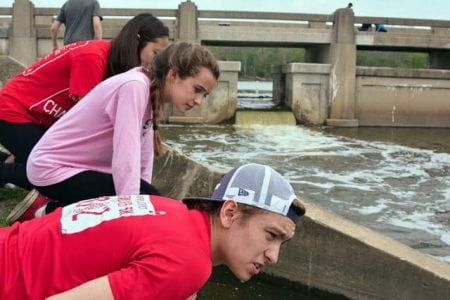
EIGHTH GRADE: INTERDISCIPLINARY LEARNING
School: Wilmette Junior High School.
Goal: Interdependent Relationships in Ecosystems (LS2.A).
Program: Wilmette students spend three days each fall at Skokie Lagoons. While their classroom teachers lead them through water quality testing, BYNC introduces various other lessons: invasive species impact on the lagoons, history of the lagoons, sea level factors, reversal of the Chicago River, plant identification, animal tracking, resident mammals, bird watching, and macroinvertebrate identification.
Results: Between 450 and 500 students return to Skokie Lagoons each year where they are schooled in a variety of subject matter. The trip is so popular that we will be expanding into the seventh grade class this year.

HIGH SCHOOL SOPHOMORES: ENGINEERING
School: New Trier Township High School.
Goal: Analyze complex real-world problems by specifying criteria and constraints for successful solutions (HS-ETS1-1).
Program: Following a discussion about the concept of nature play, architecture students designed and presented a proposal for the Winnetka Park District to install a Nature Play Area for young children.
Results: Students practiced their presentations and received feedback from BackYard Nature Center members before taking their park designs to the Park District for approval.
